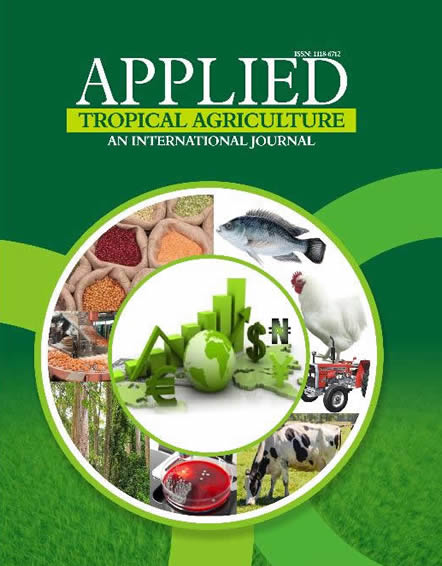The effect of substituting roasted whole maize (Zea may) flour with African oil bean seed (Pentaclethra macrophylla Benth)
flour and acceptability of the product was investigated. Composite flour was developed from roasted maize and African oil
bean seed flour at ratios 90:10 (MAO1), 80:20 (MAO2), 70:30 (MAO3) and 100% (MAF) as control sample. Maize based
snack (aadun) was produced from resulting composite blends. Proximate, chemical, functional, minerals and sensory
properties of samples were determined using standard procedures. The protein, fat and mineral content increased with
increasing African oil seed flour substitution. Protein (14.55±0.02) and fat (10.45±0.45) was highest in MAO3. Tannins and
oxalates increased with increasing African oil bean seed substitution. Phytate contents in samples were significantly (P<0.05)
higher in MAO2 and MAO3 than other samples. At 30% substitution level the taste, appearance and overall acceptability of
maize based snack were significantly affected and unacceptable. Production of enriched maize-based snack could be best
achieved at 10-20% substitution of maize flour with African oil bean seed flour.
Key words: Maize, snacks, roasting, African oil bean, substitution
INTRODUCTION
Maize (zea mays), is among the most important and most
widely grown cereal grain in the world. Maize is a grain of
importance as typified in its global high rate of production.
In 2007, the global maize grain production stood at 766
million tonnes with United State of America being the
largest producer with 40% of the total global production
(Radosavljevi? et al., 2010). Almost half of the world
production of maize is produced from the developing
countries including Nigeria (Samapundo et al., 2007). Its
applications include but not limited to human consumption,
feeds for livestock, bio-fuel production and as raw material
for many industrial applications (FAO, 2012).
African oil
PAPER TITLE :PHYSICOCHEMICAL AND SENSORY QUALITIES OF “AADUN” A MAIZE BASED SNACK SUPPLEMENTED WITH DEFATTED AFRICAN OIL BEAN SEED FLOUR
APPLIED TROPICAL AGRICULTURE | VOLUME 22 NUMBER 2 2017
Paper Details
- Author(s) : Akinola, S.A., and Enujiugha, V.N.
- Abstract:


